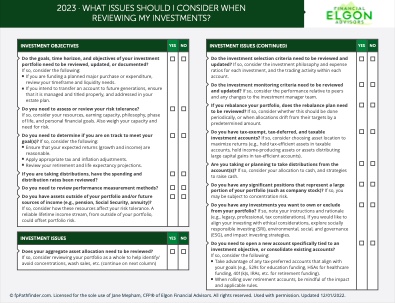College Choice is a key decision for every family with kids from kindergarten to high school. May 1st is National College Decision Day. It is the day high school seniors commit to college; they plan to attend in the fall.
So, it is a big deal for families with graduating seniors. With the college decision, comes the college funding question. A lot of families, end up borrowing money for college, which is leading to some worrying trends.
Photo by Nick Fewings on Unsplash
Student Debt Worsening Statistics
Recent college student debt statistics are trending in the wrong direction. This chart from the EDUCATIONDATA.ORG paints a very clear picture of where we are going as a nation on this issue. The student debt is currently $1.71 trillion and is growing 6 times faster than the nation’s economy.
From the same study, we get the following data points.
Student loan debt is now the second-highest consumer debt category.
65% of college students are graduating with student debt.
Over 45 million student borrowers are in debt by an average of over $38,000.
43 million borrowers with federal student loan debt owe an average of $36,510 each.
4 million borrowers owe an average of $57,083 each in private loans.
8% of people with student loans borrowed for undergraduate education.
2% of those with debt borrowed for postgraduate education.
15% of all American adults have outstanding student debt.
Among the 15%, 93% borrowed to pay for their education, while 81% borrowed to pay for a child’s or grandchild’s education.
52% of students who had taken on student loan debt did not feel it was worth it. (This calls for a lot of thought and introspection.)
College Tuition Going Up
In the last 10 years, private tuition cost has gone up by more than 25% and by 35% in public schools. There have been a lot of studies on what’s causing it to rise, a cost that falls squarely on the shoulders of new college students and their families.
For example, based on different online calculators online, an average Ivy League school today costs $50,770, which adds up to $339,470 for an 8-year-old.
Using the average cost of a 4-year degree at a state school $23,110, the total cost for this education for a 10-year-old is $154,423.
This is a lot of money to save, which partly explains why families continue to take on more debt. But it also raises the question, is there another way to approach the College Choice dilemma?
Immigrant Parents and College Choice
As general rule parents want their kids to go to college, and immigrant parents have even higher expectations that their kids will not only get undergraduate degrees but will go on to get graduate and professional degrees. This is just another step in the American dream that needs to be figured out.
As a foreign student, I did not have the option of getting traditional student loans (private or government funded). With that option off the table, I had to figure out other ways of funding my education.
I have often wondered what would happen if loans were not an option or if we made it more difficult for students to take on debt.
Part of this would be educating potential students on the implications of the debt, and how that debt gets paid off. It is a complex issue that requires a lot of thought and input from the whole community to solve.
As a financial advisor, it’s heartbreaking to see families having to choose to forgo their retirement or another big-money goal to fund college and still end up taking on debt.
Our industry is very focused on helping families pay for college with a combination of cash flow, savings (like 529s, ROTH, etc.), debt, and any other strategies that will help mitigate the high cost.
Yes, we are very focused on solving the money question, but not the underlying question (which may or may not be out of our hands). Are we making the right college choices for our kids?
In life, focus on what you can control. In this situation, the one thing we can control is rethinking how we choose the college our high school students will attend, and by default determine how much this education will cost.
Rethinking How We Conduct the College Choice
As we work with our high school, middle school, and even elementary students, we need to rephrase the question.
What college do you want to go to? to
What college have you earned?
It’s a subtle difference, but I’ll provide an answer below which will help rephrase the whole debate.
Does it Matter What College you Attend?
There is a lot of ongoing research trying to determine whether it matters where one goes to college or not. According to this article, college rankings and media coverage of the admission process continues to push the theory of prestige. The author argues that the experiences one has at college are more important than where one goes.
This paper continues the argument that student engagement matters more than selectivity in determining success and happiness.
Another school of thought explains the advantage of some schools as the connections and networks one makes there being the keys to success, versus what’s being taught in the lecture halls.
There is merit in both approaches, but I think the hard work, and the student engagement outweigh the latter if the student is more vested in the school, which is where my argument is heading.
How Families Make the College Choice for their Kids
Most parents approach this question in a couple of different ways: –
Let the Student Decide
As kids grow older, we ask them what college they want to go to, and we take that as their college choice. The problem is that their decision is most likely based on: –
What major sounds cool – probably without a lot of thought into the future job prospects.
What schools do their friends want to go to?
What their guidance counselor suggests they should look at.
What schools do they think their parents want them to go to?
Nothing to do with what it will cost to go to their dream school.
We Are the Parents, So We Decide
Nothing wrong with this option but interesting to find out the logic the parents use to come up with these ideas.
Immigrant parents tend to have strong opinions on this, based on their background and what they learned about the schools growing up. It may not be very different from other parents but’s important to look at these ideas through that cultural lens.
Some of the interesting ones include the following,
Prestige over common sense – my child can go to any school they want, provided that it’s Ivy League.
Family tradition – our families go to XYZ college, why would our child not go there? It’s my alma mater or nothing.
I want my kids to pursue “name the degree” and the best school for this is “name the school”.
Cost of College
Using some of the above methods has led to situations where families are committing to huge amounts of debt without the student knowing what they want to study. They are more focused on getting into a college but have not given their major a lot of thought.
The solution is to switch majors constantly which ends up adding time and tuition to an already high cost.
Rethinking College Choice
The rising costs create another option and probably the most logical one for picking out the college kids will attend. Instead of using some of the above criteria, we should instead have the kids attend the school they earn.
Parents need to start having conversations with the kids as early as possible about what they can afford, not what schools they want them to attend.
They might be willing to make a sacrifice, but it should not be the type of sacrifice that jeopardizes their welfare like their retirement.
The students will then need to commit to covering the gap between that and the average cost (can get more detailed later) and/or make that gap as small as possible.
For these conversations, assume student loans are not an option, and if they are, they would be the last resort.
Making the next steps will require the kids to be fully committed to the process, and to be very thoughtful about the choices they make with their parent’s assistance.
Ideas that Support Making a Different College Choice
If a kid is not ready for the intense work that it will take to earn a specific college, it’s okay to have them start at a community college and transfer to a 4-year college later.
This saves them a ton of money and is probably one of the best solutions for those who are not sure about what they want to major in.
If the choice comes down to an in-state versus an out-of-state school – go with in-state, unless the out-of-state is fully funded and is cheaper. There is the argument, that the cheaper school may not offer the major they are interested in. But this should not be a concern unless it’s a very specialized area of study.
A New York Federal Reserve study reports that only 27% of college graduates end up working in the major they studied in college. About 75% of college graduates work in fields unrelated to their major.
There is a reason why the first two years of college are based on core education classes.
A piece of advice to the students is to apply for all kinds of academic scholarships and be very aggressive starting in the freshman year. This will start to narrow down what colleges they should be focused on.
Have the kids start working as early as possible, with the idea of saving some of that money for college. They are not likely to earn much, at least not enough to fully cover tuition, but this starts to install the discipline, they need in life.
It also starts making them more mindful of money and what life costs in general. Yes, you want them to spend a lot of time studying, but this may prove to be more valuable in the future.
So, my answer to the question, of what college should my student go to, is simply this.
It’s not the one they think they deserve, or the one they think they want to go to, or the one you want them to go to, or the one their friends are going to, but the school they earn!
If you’d like to chat about college planning or any other money topics, I would love to connect here.
To continue being a part of the conversation on financial issues that affect foreign-born families subscribe to Elgon’s blog posts by email here.
Disclaimer: This article is provided for general information and illustration purposes only. Nothing contained in the material constitutes tax advice, a recommendation for the purchase or sale of any security, investment advisory services, or legal advice. I encourage you to consult a financial planner, accountant, and/or legal counsel for advice specific to your situation. Reproduction of this material is prohibited without written permission from Jane Mepham and all rights are reserved. Read the full disclaimer here.

Recent Articles

How To Build US Credit From Zero
How to build US credit from zero when new in the – In this post, I break down what US credit score is, what it’s used for and how to start building it with zero credit history. This is addressed to those brand new immigrants, but applies to anybody that’s looking to start building their credit history.

Jane Mepham Quoted In the Press – Empty-Nesters Financial Tips
In todays post, I discuss ten financial tips for empty-nesters.
We are about to become empty-nesters. So this is a subject that’s been on my mind quite a bit.
I know we are not loosing the kids – but the relationship is going to change.
Lots of fun times ahead!

How to Fix The Overseas Tax Compliance Issues That Can Destroy Your FIRE Strategy On A Work Visa
Part of being able to successfully implement the FIRE strategy on a work visa is saving or minimizing on taxes.
Having to pay tax penalties because of tax-compliance issues goes against that. In this post, I discuss ways to be tax-compliant with overseas assets and avoid having to pay tax penalties.


